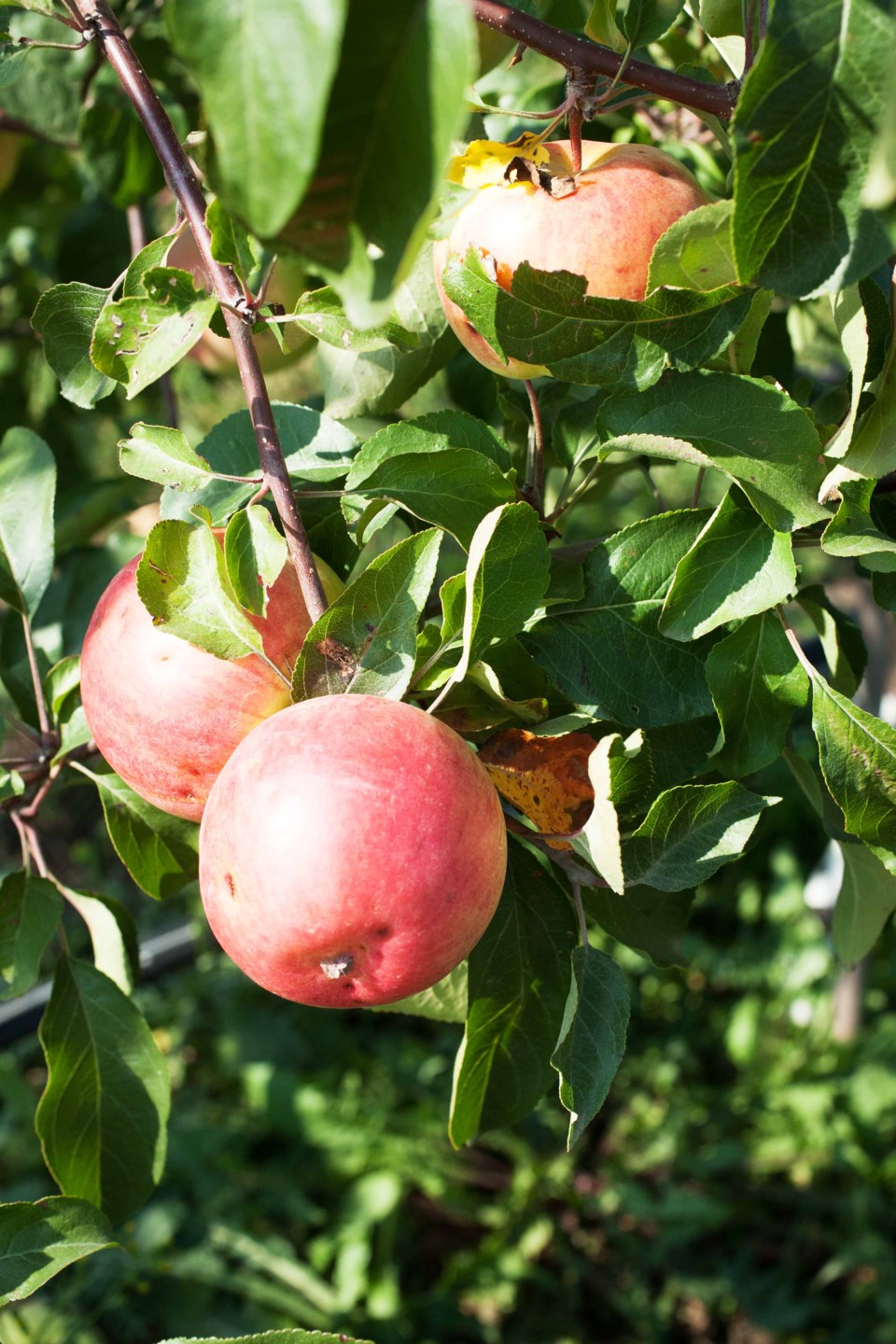Did you know that right here on the prairies we can grow apples that are as good as those that are grown anywhere in the world? We can compare the quality of apples to those grown in the Okanagan, the Annapolis Valley and other places around the world. In 2019, Asia produced 56 million tons, followed by Europe with 17 million tons. Next was the Americas with nine million tons, Africa with three million tons and Oceania with 818,000 tons.
To appreciate what it takes to grow delicious apples it is important to realize that all of the cultivars of apples that we see in the grocery store are not grown from seed but instead are propagated asexually or also commonly called produced by clones. The reason this is necessary is that for an apple tree to produce apples it needs to be cross-pollinated with another apple tree. What this means from a genetics perspective is that there is a huge diversity of genetic data contained within that apple seed and each seed will grow into something unique from every other seed within that apple. It may produce fruit that is unique or it may not produce any fruit at all.
Another interesting fact is that the apple industry worldwide has been changing. As stated earlier each apple tree is produced asexually so a graft from the desired type of apple is grafted onto a compatible rootstock. This rootstock began as a complete tree with a root system and a single stem. In the apple industry most often this rootstock is a dwarf rootstock which will affect the apple tree itself to keep it smaller in stature and will also affect when fruit is produced. The apple industry has been utilizing dwarf rootstock for many years as the trees themselves are smaller, and require less maintenance, pruning is easier as they are shorter trees and the process has proven to result in larger fruit and more fruit can be produced on the same-size land base.
As mentioned above, the rootstock will affect the tree’s age to bear fruit. Generally speaking, dwarf apples will produce two to three years after planting while semi-dwarf apples will usually begin to bear fruit four to five years after planting. Standard apples may take seven to ten years to reach maturity and begin to bear fruit. Please note that dwarf trees will need staking or a trellis to support themselves and stay upright when fruiting.
The top part of the tree which has the newest growth is referred to as scion wood. This scion wood is collected during the winter while the tree is dormant and should be one-quarter to three-eighth of an inch in diameter. Store the scion wood in a cool, moist location with temperatures close to 34 F. Do not freeze but keep the humidity high and very close to freezing.
Grafting during late summer should occur when there is a sufficient movement within the tree that the bark slips or in other words when the bark of the stock easily separates from the wood and buds are fully developed. Budding and specifically T-budding is the chosen grafting method where a single bud is taken from the scion wood onto the rootstock. This method is faster than other grafting techniques and the success rate is generally quite high as a stronger union is formed between the scion wood and the rootstock. Even for a novice grafter, this method has proven to be one of the best options. The bud will remain dormant until spring and once the graft site has healed the wood above the graft will be removed.
Please note that to do this grafting a sharp, good-quality knife is essential. The graft should be wrapped with grafting tape, a specialized tape used for grafting. Over the years many other tapes and methods have been used. When I first learned to graft, we wrapped the graft site with rubber bands and paraffin. It took a fine hand to ensure the wrapping was tight but not too tight to keep the graft site from desiccating but not so tight that the graft site would be strangled and not allow the sap to flow.
Watch for more upcoming articles on fruits we can successfully grow on the prairies – giving us a bountiful and diverse choice when stocking our larder for the long winter months.
Hanbidge is the Lead Horticulturist with Orchid Horticulture. Find us at ; by email at [email protected]; on Facebook @orchidhort and Instagram at #orchidhort. Tune into GROW Live on our Facebook page or check out the Youtube channel GROW




